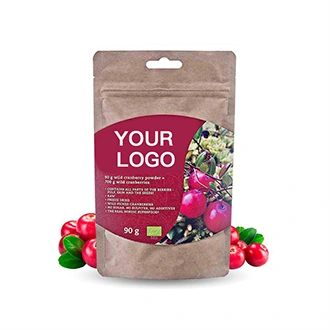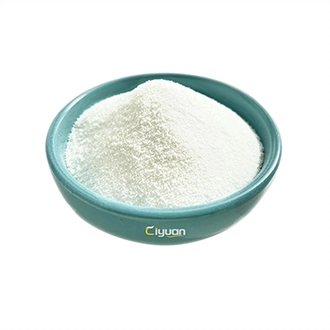What is Zinc Oxide?

Zinc oxide powder is a emulsion that consists of zinc and oxygen tittles. It's produced through a process called the French process, where metallic zinc is wracked and also oxidized in the presence of air to form zinc oxide. The performing greasepaint is a fine, white substance with a liquid structure. It possesses several unique parcels that make it protean and extensively used in colorful diligence. It's a protean emulsion with multiple salutary parcels. Its UV- blocking,anti-inflammatory, soothing, antimicrobial, and color- related characteristics make it a precious component in colorful diligence, ranging from skincare and cosmetics to pottery and coatings.

CERTIFICATE OF ANALYSIS

ANALYSIS | SPECIFICATION | RESULTS |
Appearance | White powder | Complies |
Odor | Characteristic | Complies |
Tasted | Characteristic | Complies |
Assay | 99% | Complies |
Sieve Analysis | 100% pass 80 mesh | Complies |
Loss on Drying | 5% Max. | 1.02% |
Sulphated Ash | 5% Max. | 1.3% |
Extract Solvent | Ethanol & Water | Complies |
Heavy Metal | 5ppm Max | Complies |
As | 2ppm Max | Complies |
Residual Solvents | 0.05% Max. | Negative |
Microbiology |
|
|
Total Plate Count | 1000/g Max | Complies |
Yeast & Mold | 100/g Max | Complies |
E.Coli | Negative | Complies |
Salmonella | Negative | Complies |
Have you decided to buy our products? You can leave a message on the website or get more information and free samples directly through selina@ciybio.com.cn
Brief research history

19th Century: Early investigations focused on understanding the chemical composition and properties of zinc oxide.
Late 20th Century: Research highlighted its effectiveness as a UV-blocking agent, leading to its use in sunscreens.
Late 20th Century to Early 21st Century: Studies explored its photocatalytic properties for applications in air purification and self-cleaning surfaces.
Nanotechnology Era: Researchers synthesized and studied zinc oxide nanoparticles, opening possibilities for applications in electronics and sensors.
Biomedical Applications: Investigations explored its potential in wound healing, tissue engineering, drug delivery, and antibacterial coatings.
Benefits

1. UV Protection:
Zinc oxide powder is widely recognized for its excellent UV-blocking properties. It acts as a physical barrier, reflecting and scattering UVA and UVB rays from the sun, thereby protecting the skin from sunburn, premature aging, and other harmful effects of UV radiation.
2. Skin Soothing and Healing:
It possesses anti-inflammatory properties, making it beneficial for soothing and calming irritated skin. It is commonly used in topical creams and ointments to alleviate redness, rashes, and skin irritations. It can also contribute to wound healing and the prevention of infection.
3. Antimicrobial Activity:
micronized zinc oxide exhibits antimicrobial properties, which make it effective against certain bacteria and fungi. It can be utilized in products such as wound dressings, medical textiles, and personal care items to inhibit the growth of microorganisms and prevent infections.
4. Absorbency and Oil Control:
Due to its absorbent nature, it can help control excess oil on the skin. It is often incorporated into cosmetic formulations, such as powders and mattifying products, to reduce shine and create a matte appearance.
5. Skin Brightening and Even Tone:
micronized zinc oxide has the ability to scatter light, which can help improve the appearance of uneven skin tone and provide a brightening effect. It is often utilized in cosmetic products like foundations, BB creams, and tinted moisturizers to enhance the complexion's radiance.
6. Environmental Protection:
It is considered environmentally friendly as it does not degrade or release harmful chemicals into the environment. This makes it a preferred choice for applications such as marine-safe sunscreens and eco-friendly coatings.
7. Pigment and Opacity:
Zinc Oxide is widely used as a white pigment and opacifier in various industries. It provides coverage, brightness, and opacity to products such as ceramics, paints, coatings, and pigmented cosmetics.
Application

1. Cosmetics and Skincare Industry:
It is extensively used in cosmetics and skincare products such as sunscreens, foundations, moisturizers, and anti-acne treatments.
2. Pharmaceutical and Medical Industry:
It is utilized in the pharmaceutical and medical fields for wound healing products, antibacterial creams, diaper rash ointments, and other dermatological treatments.
3. Textile Industry:
It is incorporated into textiles and fabrics to provide antimicrobial properties, making it suitable for sportswear, socks, and other textiles prone to microbial contamination.
4. Ceramics and Glass Industry:
Zinc oxide powder is utilized in the ceramics and glass industries as a fluxing agent and glaze opacifier.
5. Food and Food Packaging Industry:
It can be used as a dietary supplement in certain food products and incorporated into food packaging materials to provide antimicrobial properties and extend shelf life.
6. Personal Care Industry:
Zinc Oxide is used in personal care products such as deodorants, powders, and talcs for its moisture-absorbing and odor-controlling properties.
About US



Manufacture








